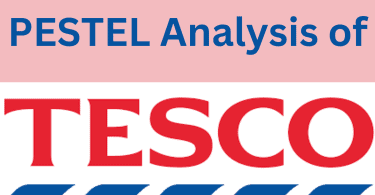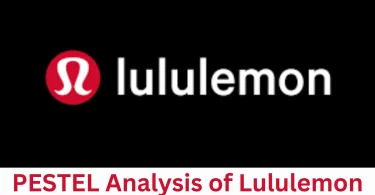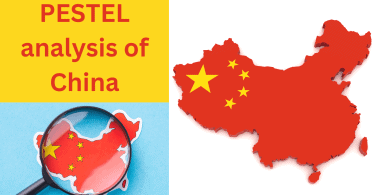To investigate the main factors that impact positively or negatively the growth and the sustainability of the tech industry, we present our complete “Microsoft PESTEL analysis”.
Within this article, we discuss the global impact of the macro factors on the growth of the tech giant. Prepare to embark on a journey where data-driven insights guide the way as we reveal the strategies that drive change and success in the tech industry.
Microsoft Overview
Microsoft is an American multinational technology corporation that develops, manufactures, licenses, supports, and sells computer software, consumer electronics, personal computers, and related services. Its best-known software products are:
- The Microsoft Windows line of operating systems.
- The Microsoft Office suite of productivity software.
- The Edge web browser.
Its flagship hardware products are the Xbox video game consoles and the Microsoft Surface lineup of touchscreen personal computers. As of 2023, it is the world’s largest software maker by revenue.
Microsoft was founded by Bill Gates and Paul Allen on April 4, 1975, to develop and sell BASIC interpreters for the Altair 8800. It rose to dominate the personal computer operating system market with MS-DOS in the mid-1980s, followed by Windows.
The company’s 1986 initial public offering (IPO) and subsequent rise in its share price created three billionaires and an estimated 12,000 millionaires among Microsoft employees.
Today, Microsoft is one of the world’s most successful and influential technology companies. Billions of people around the globe use its products and services. Microsoft is also a leader in cloud computing, artificial intelligence, and other emerging technologies.
Here are some of the most popular Microsoft products and services:
- Windows operating system
- Microsoft Office suite
- Edge web browser
- Xbox video game consoles
- Microsoft Surface lineup of personal computers
- Microsoft Azure cloud computing platform
- Microsoft Teams collaboration platform
- LinkedIn social networking platform
- GitHub software development platform
- Minecraft video game
Microsoft is a major player in the technology industry, and its products and services significantly impact how we live and work.
Tech industry overview
The technology industry is one of the global economy’s most dynamic and rapidly growing sectors. It encompasses various companies and products, from hardware and software to telecommunications and internet services.
The tech industry is also at the forefront of many of the most important trends shaping the world today, such as artificial intelligence, big data, and cloud computing.
The competition level in the technology industry is very high. There are many large, established companies and a growing number of startups and innovative new entrants.
This competition is driven by the rapid pace of innovation and the constant pressure to develop new and better products and services.
Microsoft PESTEL analysis
We now turn to the results of Microsoft PESTEL analysis:
Political environment
The following political factors are affecting the growth of Microsoft worldwide:
Geopolitical tensions
The ongoing trade war between the United States and China and the increasing tensions between the United States and Russia could hurt Microsoft’s business in both countries.
Government regulation
Government regulation in antitrust and cybersecurity could also impact Microsoft’s business.
Government contracts
Microsoft has a long history of winning government contracts, but this could also be impacted by political factors such as changes in government leadership or government policies.
International trade
International trade agreements can help Microsoft reduce costs and expand its reach into new markets. However, they can also be impacted by political factors such as changes in the political landscape or government attitudes towards trade.
In addition to these general factors, a number of specific political factors affect Microsoft’s growth in specific countries or regions.
For example, Microsoft is facing antitrust investigations in the United States and Europe, and it is also facing challenges in China, where the government has been favoring domestic technology companies.
The political environment is becoming increasingly complex and challenging for technology companies like Microsoft. Microsoft is taking steps to mitigate the risks posed by the political environment, but it remains to be seen how these factors will impact the company’s growth in the coming years.
How Microsoft is responding to the political environment threats?
Microsoft is responding to the political environment in several ways, including:
Investing in cloud computing and artificial intelligence
Cloud computing and artificial intelligence are less likely to be impacted by geopolitical tensions and government regulation, so Microsoft is investing heavily in these areas.
Building stronger relationships with governments
Microsoft is working to build stronger relationships with governments worldwide to understand their concerns better and advocate for its interests.
Complying with data protection laws
Microsoft is complying with new data protection laws in Europe and other jurisdictions and investing in data security and privacy technologies.
Addressing antitrust concerns
Microsoft is working to address antitrust concerns in the United States and Europe. For example, the company has agreed to change its business practices to settle antitrust investigations.
Microsoft is also working to educate policymakers about technology’s importance and advocate for policies that support innovation and economic growth.
Economic environment
The international economic environment is expected to have a mixed impact on Microsoft’s growth in the coming years. On the one hand, factors such as unemployment, inflation, and exchange rates could harm the company’s business.
On the other hand, Microsoft is well-positioned to benefit from long-term trends such as the growth of cloud computing and artificial intelligence.
Negative impacts:
Unemployment can lead to decreased demand for Microsoft’s products and services, as businesses and consumers have less money to spend.
Inflation can increase Microsoft’s costs, which could lead to lower profits.
Exchange rates can significantly impact Microsoft’s revenue, as the company generates a large portion of its revenue from outside of the United States.
If the US dollar strengthens against other currencies, it will make Microsoft’s products and services more expensive for customers in other countries.
Recession: A recession could lead to a sharp decline in demand for Microsoft’s products and services as businesses and consumers cut back on spending.
Positive impacts:
Cloud computing
Cloud computing is a major growth driver for Microsoft. The company’s Azure cloud computing platform is one of the leading cloud computing platforms in the world.
Artificial intelligence
Artificial intelligence is another major growth driver for Microsoft. The company is investing heavily in AI and developing AI-powered products and services.
Digital transformation
The shift to digital transformation creates new opportunities for Microsoft. The company’s products and services are helping businesses to transform their operations and to become more digital.
Overall, the international economic environment is expected to have a mixed impact on Microsoft’s growth in the coming years.
The company faces challenges like unemployment, inflation, and exchange rates. However, the company is also well-positioned to benefit from long-term trends such as cloud computing and artificial intelligence growth.
Social environment
According to our investigations, the following social and cultural factors are impacting the growth of Microsoft worldwide:
Digital literacy and technology adoption
The level of digital literacy and the rate at which new technologies are adopted within a society significantly influence the demand for Microsoft’s products and services.
There is a strong demand for Microsoft’s products and services in countries with high levels of digital literacy and technology adoption, such as the United States and Japan.
However, in countries with lower levels of digital literacy and technology adoption, such as India and Brazil, there is less demand for Microsoft’s products and services.
Changing consumer habits and expectations
The increasing demand for mobile and cloud-based services, driven by changing consumer behavior and expectations, positively impacts Microsoft’s product development and offerings.
Microsoft is developing new products and services to meet the changing needs of consumers. For example, Microsoft has developed the Azure cloud computing platform to meet the growing demand for cloud-based services.
Microsoft has also developed the Microsoft Surface line of touchscreen personal computers to meet the growing demand for mobile devices.
Diversity and inclusion
With operations in many countries, Microsoft must respect and value diversity in its workforce and customer base.
Data privacy and security
As more and more people use Microsoft’s products and services, there is a growing concern about data privacy and security. Microsoft needs to address these concerns to maintain customer trust.
Microsoft is taking steps to protect customer data and privacy. The company has implemented some security measures, such as encryption and two-factor authentication. Microsoft is also transparent about how it collects and uses customer data.
Ethical use of technology
As technology becomes more powerful, there are growing concerns about the ethical use of technology. Microsoft needs to take a leadership role in addressing these concerns and promoting the responsible use of technology.
Microsoft is working to address the social and cultural factors impacting its growth. The company is investing in digital literacy programs, developing new products and services to meet the changing needs of consumers, and taking steps to protect customer data and privacy.
Microsoft is also committed to diversity and inclusion and the ethical use of technology.
Technological environment
The following technological factors are impacting the growth of Microsoft worldwide:
The rise of cloud computing
Cloud computing is a major growth driver for Microsoft. The company’s Azure cloud computing platform is one of the leading cloud computing platforms in the world.
The growth of artificial intelligence
Artificial intelligence is another major growth driver for Microsoft. The company is investing heavily in AI and developing AI-powered products and services.
The increasing adoption of mobile devices
The increasing adoption of mobile devices is creating new opportunities for Microsoft. The company is developing new mobile apps and services and working to make its existing products and services more mobile-friendly.
The convergence of technologies
The convergence of technologies, such as cloud computing, artificial intelligence, and the Internet of Things (IoT), creates new opportunities for Microsoft. The company is developing new products and services that leverage these technologies.
The rapid pace of technological innovation
The rapid pace of technological innovation is both a challenge and an opportunity for Microsoft. The company needs to constantly innovate to stay ahead of the competition and meet its customers’ needs.
To address all these threats and make the most of these opportunities, Microsoft has initiated the following actions:
Cloud computing
Microsoft’s Azure cloud computing platform is one of the leading cloud computing platforms in the world. Azure provides businesses with a wide range of cloud-based services, such as computing, storage, networking, and analytics.
Microsoft is also developing new cloud-based products and services, such as its Azure Synapse Analytics platform for big data analytics.
Artificial intelligence
Microsoft is investing heavily in artificial intelligence. The company has developed several AI-powered products and services, such as its Azure Machine Learning Studio platform for developing and deploying AI models.
Microsoft is also using AI to improve its existing products and services. For example, Microsoft is using AI to improve the performance of its Office suite of productivity software.
Mobile devices
Microsoft is developing new mobile apps and services. For example, Microsoft has developed the Office Mobile app suite for productivity.
Microsoft is also working to make its existing products and services more mobile-friendly. For example, Microsoft has made its Teams collaboration platform available on mobile devices.
Convergence of technologies
Microsoft is developing new products and services that leverage the convergence of technologies such as cloud computing, artificial intelligence, and the Internet of Things (IoT). For example, Microsoft has developed its Azure IoT Hub platform for connecting and managing IoT devices.
The rapid pace of technological innovation
Microsoft is constantly innovating to stay ahead of the competition and meet its customers’ needs. For example, Microsoft has developed its Azure Quantum platform for quantum computing.
Microsoft is well-positioned to benefit from the technological factors impacting its growth. The company is a leader in cloud computing and artificial intelligence, investing heavily in these areas.
Microsoft is also developing new products and services that leverage the convergence of technologies and the rapid pace of technological innovation.
Ecological environment
Ecological constraints such as climate change, resource scarcity, and pollution can negatively impact Microsoft’s growth over the next few years in many ways:
Increased costs
Microsoft may incur higher costs due to increased energy prices, carbon taxes, and other environmental regulations. For instance, Microsoft’s data centers consume a significant amount of energy.
If energy prices rise, it will increase Microsoft’s costs. Microsoft is also facing increasing pressure to reduce its carbon footprint. If Microsoft is required to purchase carbon offsets, this will increase its costs.
Operational disruptions
Microsoft’s operations could be disrupted by extreme weather events like hurricanes and floods. Microsoft’s data centers are located all over the world.
If a data center is damaged by an extreme weather event, such as a hurricane or a flood, it could disrupt Microsoft’s operations.
Supply chain disruptions
Microsoft’s supply chain could be disrupted by resource scarcity, such as water and mineral shortages. Microsoft’s supply chain is complex and global.
A disruption to the supply of a key component, such as a semiconductor, could delay the launch of a new product or service.
Customer demand
Customer demand for Microsoft’s products and services may decline as consumers become more aware of the environmental impact of technology. As consumers become more aware of the environmental impact of technology, they may be less likely to purchase Microsoft’s products and services.
For example, consumers may be less likely to purchase a new smartphone if they know that it will be obsolete in a few years and that it will be difficult to dispose of.
Microsoft is taking steps to mitigate the risks posed by ecological constraints. The company has committed to becoming carbon-negative by 2030. Microsoft is also investing in renewable energy and energy efficiency. Microsoft is also working with its suppliers to reduce their environmental impact.
Overall, the impact of ecological constraints on Microsoft’s growth will depend on several factors, including the severity of climate change, government regulations’ effectiveness, and consumers’ choices.
Legal environment
The international legal environment can impact the growth and expansion of Microsoft in the coming years in many positive and negative ways.
Positive impacts:
International trade agreements
International trade agreements can make it easier and cheaper for Microsoft to expand into new markets. For example, the Comprehensive and Progressive Agreement for Trans-Pacific Partnership (CPTPP) has reduced tariffs on many goods and services, including software and cloud computing.
Intellectual property laws
Intellectual property laws protect Microsoft’s intellectual property, such as its patents, copyrights, and trademarks. This helps Microsoft to maintain its competitive advantage and to generate revenue from its intellectual property.
Government contracts
Microsoft won a significant amount of government contracts. These contracts can provide Microsoft with a steady stream of revenue and can help Microsoft expand into new markets.
For example, Microsoft recently won a $10 billion contract to provide cloud computing services to the US Department of Defense. This contract will provide Microsoft with a steady revenue stream and help it expand its cloud computing business.
Negative impacts:
Data protection laws
Data protection laws can make it more difficult for Microsoft to collect and use customer data. This could impact Microsoft’s ability to develop new products and services and to target its marketing efforts.
For instance, The European Union’s General Data Protection Regulation (GDPR) has made it more difficult for Microsoft to collect and use customer data. Microsoft has had to invest heavily in compliance with the GDPR and has had to change its data collection and usage practices.
Antitrust laws
Antitrust laws can limit Microsoft’s ability to expand into new markets and to acquire competitors. For example, the European Commission fined Microsoft €1.2 billion for abusing its dominant position in the market for cloud computing services.
The commission found that Microsoft was bundling its cloud computing services with its other products and services, which was making it difficult for competitors to compete.
National security laws
National security laws can restrict Microsoft’s ability to operate in certain markets and to sell its products and services to certain customers. For example, Microsoft prohibits selling its products and services to certain Iran and North Korea entities.
Overall, the international legal environment will have a mixed impact on Microsoft’s growth and expansion in the coming years. Microsoft must carefully navigate the complex international legal landscape to minimize the risks and maximize the opportunities.
Microsoft is taking steps to mitigate the risks the international legal environment poses. The company is investing in compliance with data protection laws and antitrust laws. Microsoft is also working to build relationships with governments around the world. Microsoft is also lobbying for changes to laws and regulations that harm innovation and competition.
Microsoft Pestel Analysis Summary
To summarize the results of Microsoft Pestel analysis, we present the main opportunities and threats related to the macro environment of this company.
The table below summarizes the key opportunities and threats associated with each component of the tech industry PESTEL analysis, as discussed in the article.
| Components | Opportunities | Threats |
| Political Environment | – Government contracts provide a steady revenue stream.
– International trade agreements can reduce costs and expand into new markets.
| – Political instability in operating countries can disrupt business.
– Antitrust investigations in the US and Europe pose challenges. – Challenges in China due to the government favoring domestic tech companies.
|
| Economic Environment | – Growth in cloud computing and AI contributes positively to revenue.
– A strong economy with low unemployment and inflation is generally favorable for Microsoft. – Long-term trends like cloud computing and AI offer growth opportunities.
| – Unemployment and inflation may decrease demand for products and services.
– Exchange rate fluctuations can impact revenue from international markets. -The recession could lead to reduced demand for Microsoft’s products and services. |
| Social Environment | – Demand in countries with high digital literacy and tech adoption (e.g., US, Japan).
– Meeting changing consumer habits with mobile and cloud-based services. – Development of diverse products to cater to changing consumer needs. | – Lower demand in countries with lower digital literacy (e.g., India, Brazil).
– Concerns about data privacy and security may affect customer trust. – Growing awareness of the environmental impact may affect consumer choices. |
| Technological Environment |
– Leadership in cloud computing and AI provides a competitive advantage. – Opportunities in mobile devices due to increasing adoption. – Development of products leveraging cloud computing and AI. | – Addressing ethical concerns in technology use.
– Rapid pace of technological innovation requires constant adaptation. – Technological convergence poses challenges and opportunities. |
| Ecological Environment | – Investments in renewable energy and energy efficiency.
– Working with suppliers to reduce environmental impact.
| – Increased costs due to environmental regulations and carbon offset purchases.
– Operational disruptions from extreme weather events. – Supply chain disruptions from resource scarcity. – Potential decline in customer demand due to environmental awareness. |
| Legal Environment | – Benefits from international trade agreements and intellectual property laws.
| – Data protection laws may restrict data collection and usage.
– Antitrust laws may limit expansion and acquisition capabilities. – National security laws can restrict operations in certain markets. – Legal compliance costs and changes in data collection practices (e.g., GDPR). |
Conclusion
In conclusion, as a global technology powerhouse, Microsoft operates within a dynamic environment influenced by various factors analyzed through the PESTEL framework.
Despite facing geopolitical tensions, regulatory challenges, and potential economic downturns, Microsoft has strategically positioned itself to capitalize on opportunities such as the growth of cloud computing, artificial intelligence, and evolving consumer preferences.
The company’s proactive approach to mitigating political risks, investing in sustainable practices, and adapting to technological advancements positions it well for sustained success. Navigating the complex international legal landscape and addressing environmental concerns remain ongoing challenges.
Microsoft’s commitment to innovation, compliance, and responsible business practices underscores its resilience in a rapidly evolving tech industry.
PESTEL analysis examples 2024
To better understand the PESTEL analysis, we invite you to read our recent free examples of the Pestel framework.
PESTEL analysis of Primark
Click here to read our example of Primark’s PESTEL analysis.
PESTEL analysis of Zara
Click here to read our example of Zara’s PESTEL analysis.
PESTEL analysis of DHL
Click here to read our example of DHL’s PESTEL analysis.
PESTEL analysis of FedEx
Click here to read our example of FedEx’s PESTEL analysis.
PESTEL analysis of Chipotle
Click here to read our example of Chipotle’s PESTEL analysis.
PESTEL analysis of Brazil
Click here to read our example of Pestel’s analysis of Brazil.
PESTEL analysis of Spotify
Click here to read our example of Spotify Pestel analysis.
Chick-fil-A PESTEL Analysis
Click here to read our example of Chick-fil-A Pestel analysis.
Costco PESTEL Analysis
Click here to read our example of Costco Pestel analysis.
Disney PESTEL Analysis
Click here to read our example of Disney Pestel analysis.
Airline Industry PESTEL Analysis
Click here to read our example of the Airline industry Pestel analysis.
Walmart Pestel Analysis
Click here to read our example of Walmart Pestel analysis.
Amazon Pestel Analysis
Click here to read our example of Amazon Pestel analysis.
McDonald’s Pestel Analysis
Click here to read our example of the Netflix Pestel analysis.
Netflix Pestel Analysis
Click here to read our example of the Netflix Pestel analysis.
Apple Pestel Analysis
Click here to read our example of the Apple Pestel analysis.
Twitter Pestel Analysis
Click here to read our example of the Twitter Pestel analysis.
Facebook Pestel Analysis
Click here to read our example of the Facebook Pestel analysis.
Pestel analysis of the Social Media industry
Click here to read our example of the Pestel analysis of the Social Media industry.
Ikea Pestel Analysis
Click here to read our example of the IKEA Pestel analysis.
Tesla Pestel Analysis
Click here to read our example of the TESLA Pestel analysis.












Leave a Comment